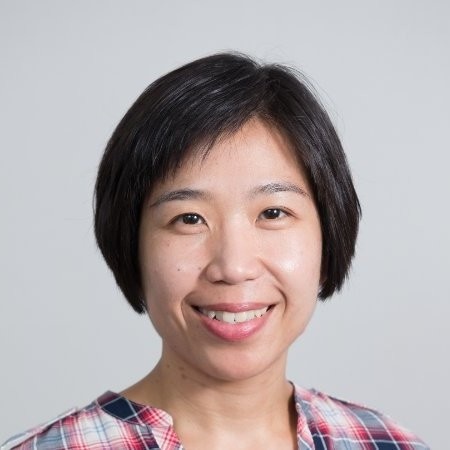Fukui: New Trends Crafted from Traditional Skills
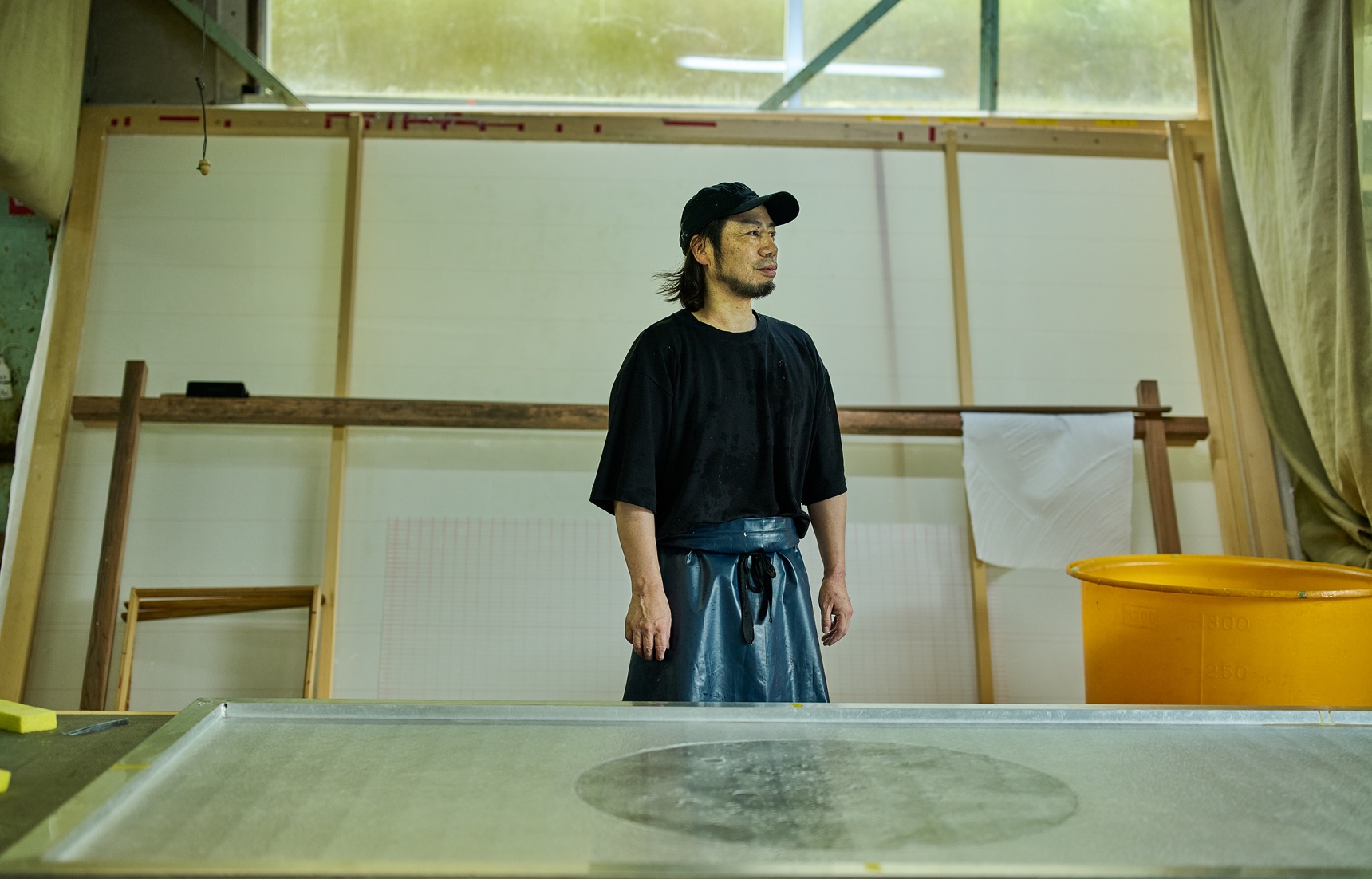
This August, LUMINE Singapore, the concept store featuring Japanese fashion and lifestyle brands, will feature the best of Fukui Prefecture’s craft products in a pop-up store commemorating the opening of its new flagship store at Raffles City.
By Ching-Li TorPerfect climate for handicraft
In Fukui, there’s a local saying that goes: “You can forget your lunch, but never forget your umbrella.” In fact, half of the year consists of rainy days, and the winters often see heavy snowfall. The climate has affected flourishing cottage industries such as handmade paper, lacquerware and spectacle-making, as people found work that they could do indoors.
Water for washi
The water in Fukui is soft—meaning that is free from the dissolved salts of metals such as calcium, iron or magnesium that form insoluble deposits. This quality also makes it perfect for the production of Echizen washi, or traditional Japanese handmade paper. Fukui has been Japan’s top washi producer for the past 1,500 years. There are three main raw materials used to make washi: kozo (mulberry), mitsumata and gampi, and the result is washi varieties of different fineness and texture.
Taki Seishi paper mill: Bringing washi to the world
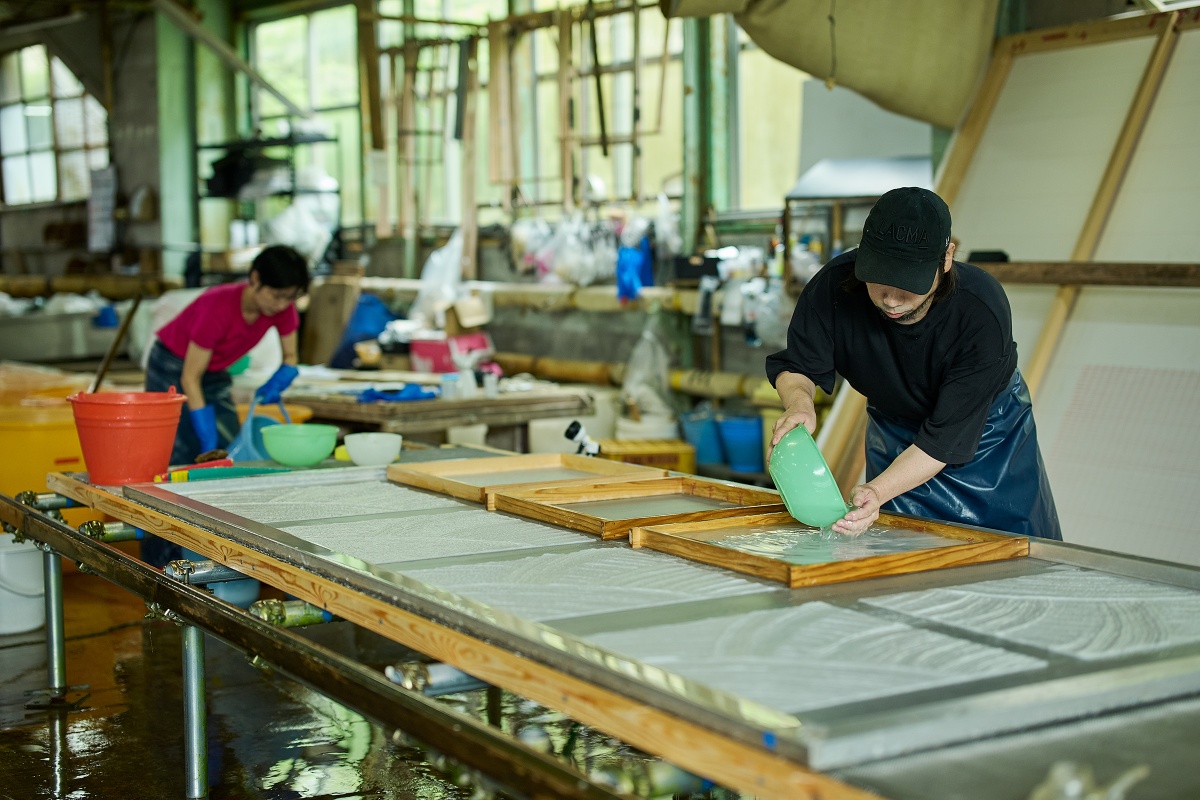
Recreating the texture of a wall plaster design using washi.
Hideaki Taki is the seventh generation of his family to run the Taki Seishi paper mill, which has been producing washi in the heart of Echizen’s Goka washi village area for nearly 150 years. Their mainstay product is machine-made large washi sheets for traditional Japanese fusuma, or wooden sliding doors, but Taki has been introducing new features into washi production since he joined his family trade in 2005.
He once left Fukui and his family business to work as a designer in Osaka. After witnessing how the villagers, staff, and companies in the same industry all pitched in to help when the family’s paper mill caught fire, he changed his mind. Touched by the unity of the villagers, he decided to return to his hometown. “Everyone is united by a local festival, so there’s a strong sense of community,” said Taki.
While preserving traditional techniques that he learnt from scratch, Taki has also taken washi in new directions. He focuses on big and bold pieces with modern design and textures that are used for wallpaper, eye-catching hotel lobby displays, and even avantgarde backdrops for motor shows.
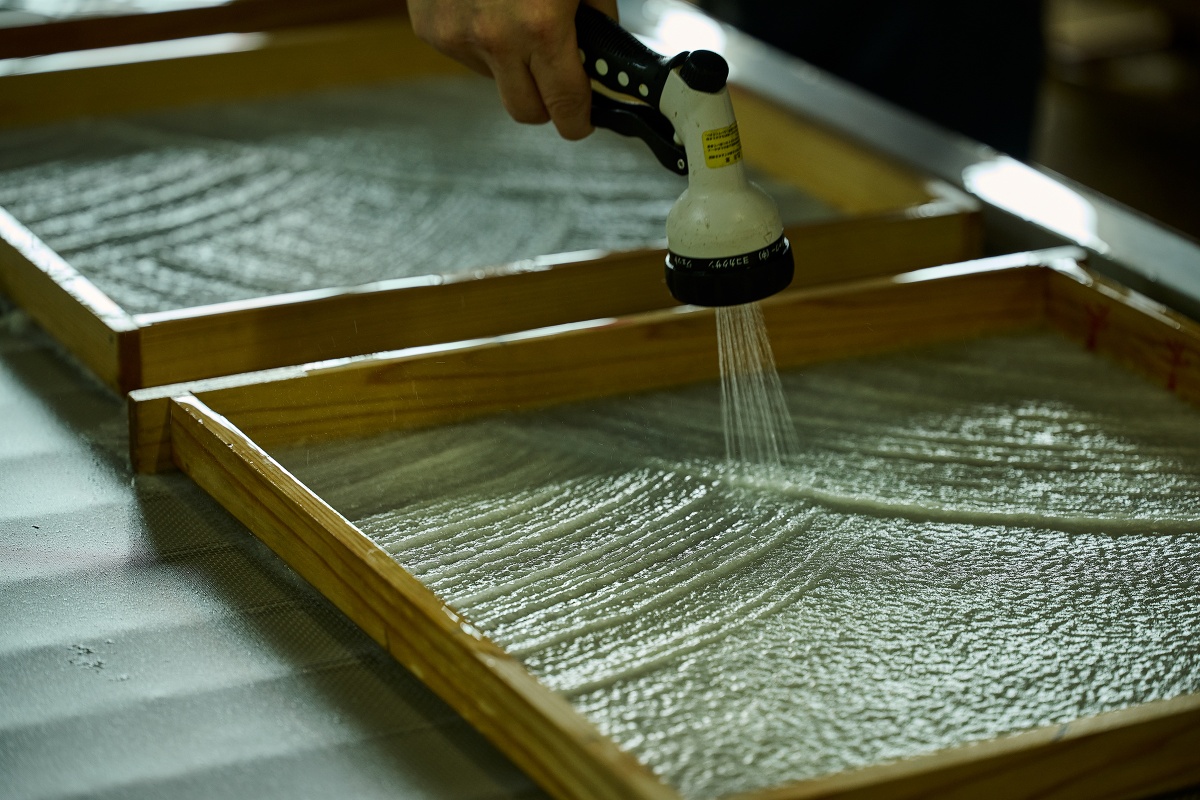
One innovative method is the use of spray from a hose to create designs on wallpaper.
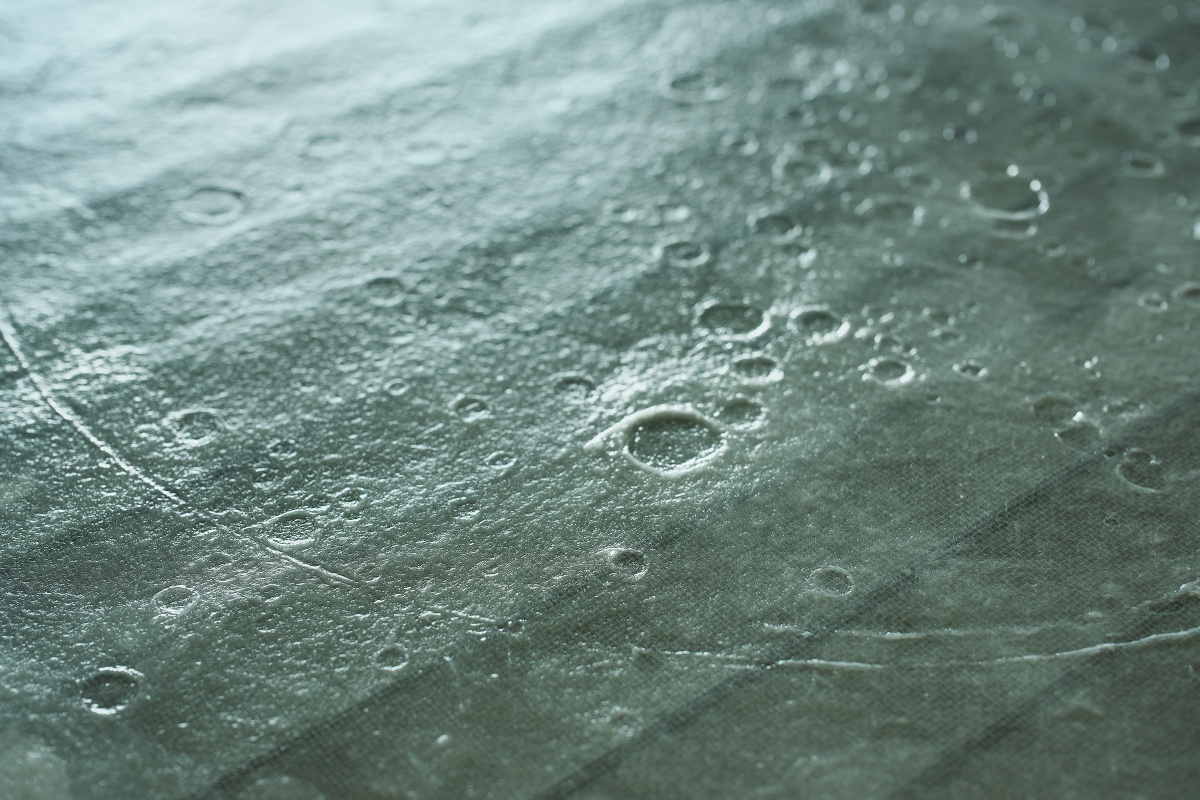
Water droplets are splashed on the washi mix to create a look like the moon’s cratered surface.
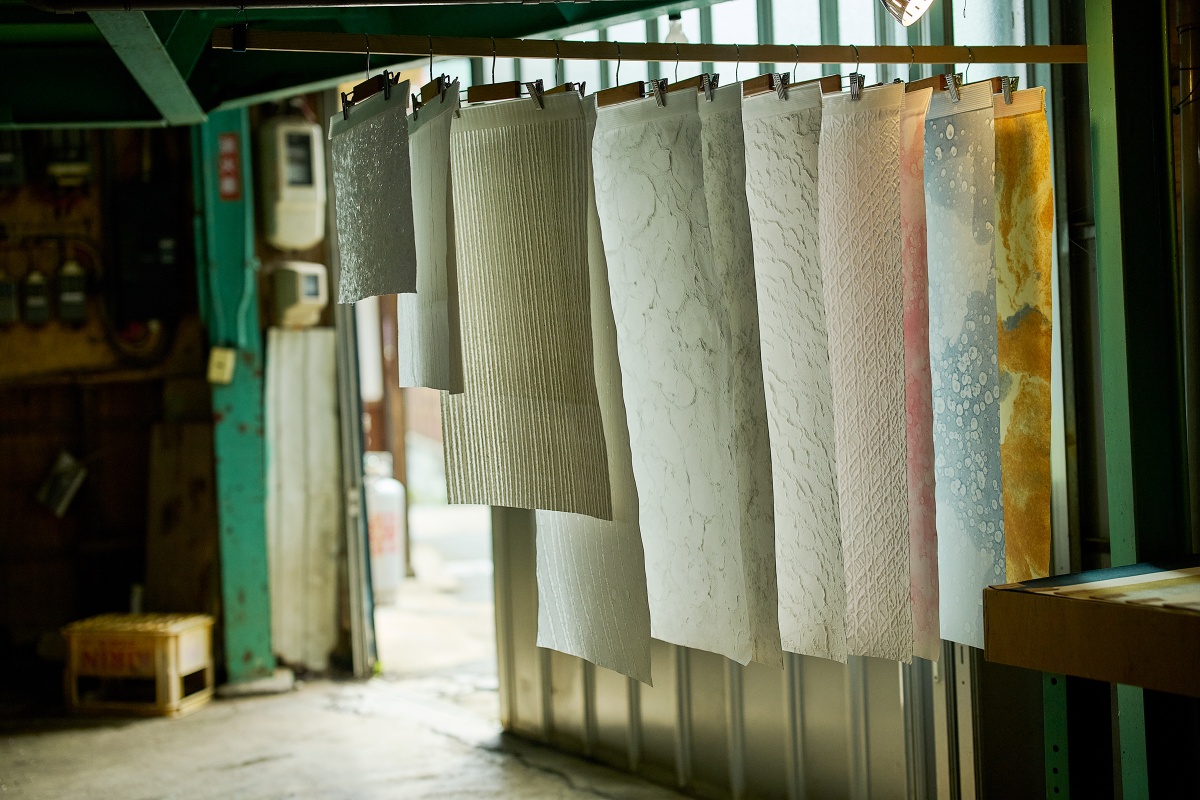
Samples of Taki Seishi’s washi products.
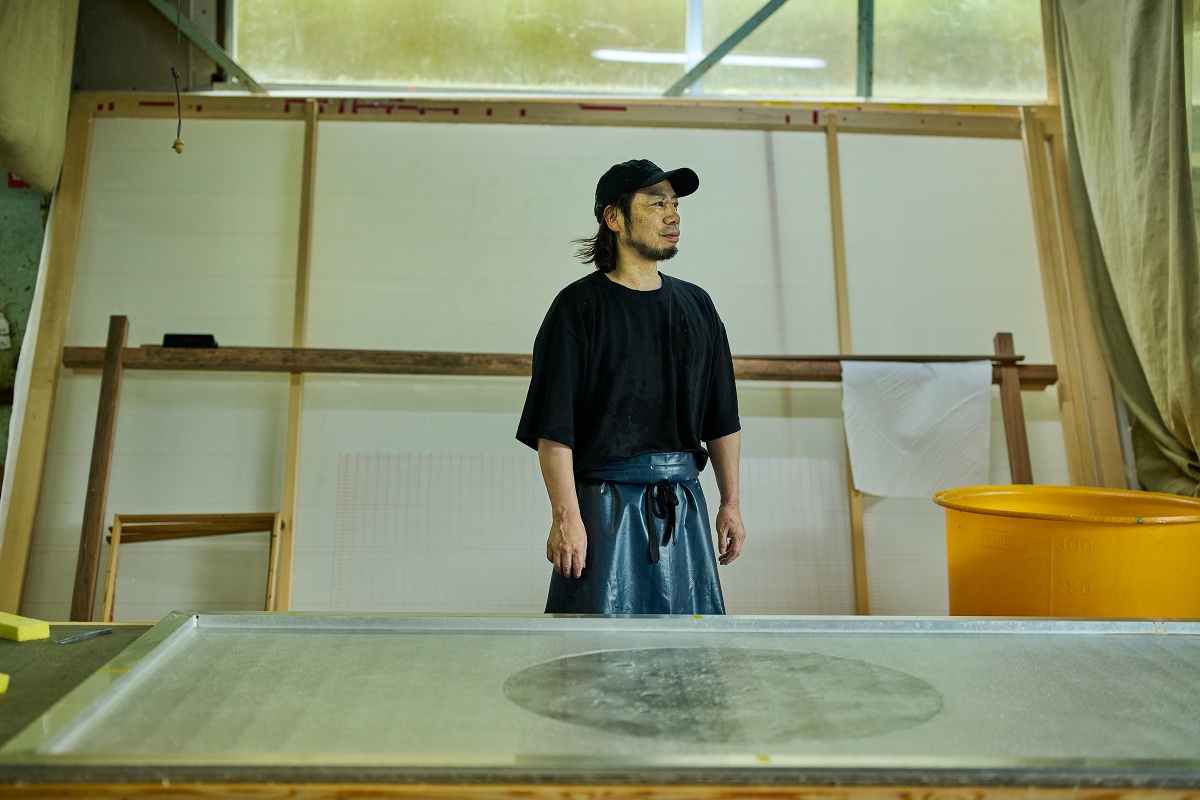
Hideaki Taki, bringing washi artwork to the world.
Taki is also bringing washi to the world through art events. At the time of our visit, he was preparing a series of washi art depicting the moon for an exhibition called Maison & Objet to be held in Paris this September.
Taki describes the appeal of washi. “Just like the moon piece that you saw, washi—even in monochrome—can change its expression through the combination of materials,” he says. “You can get a variety of patterns that convey different expressions from just one color, and that’s really interesting to me.”
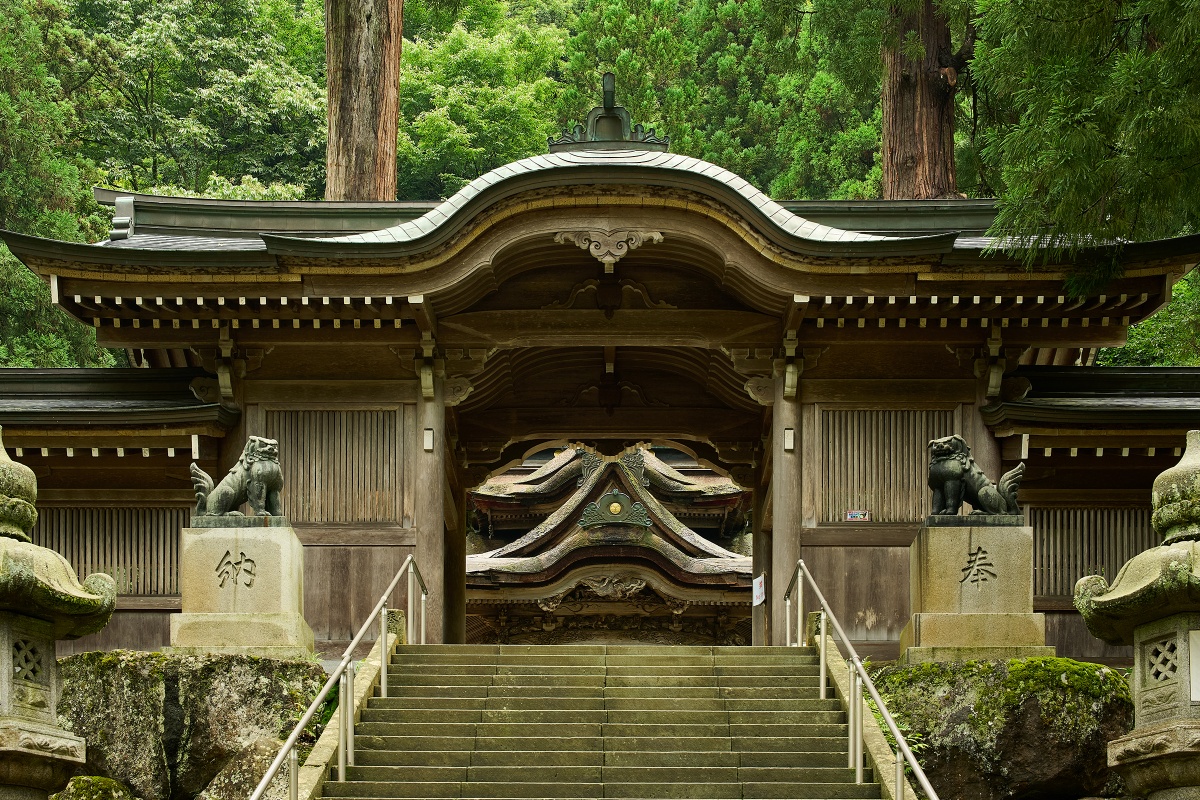
The Okamoto Shrine and Otaki Shrine
The Okamoto Shrine and Otaki Shrine enshrines the goddess of paper, Kawakami Gozen, and is just a five-minutes’ drive from Taki Seishi paper mill. Says Taki, “The goddess is said to have taught the villagers how to make washi 1,500 years ago. It’s because she resides here that the washi village exists.”
Sugihara Washipaper Inc.
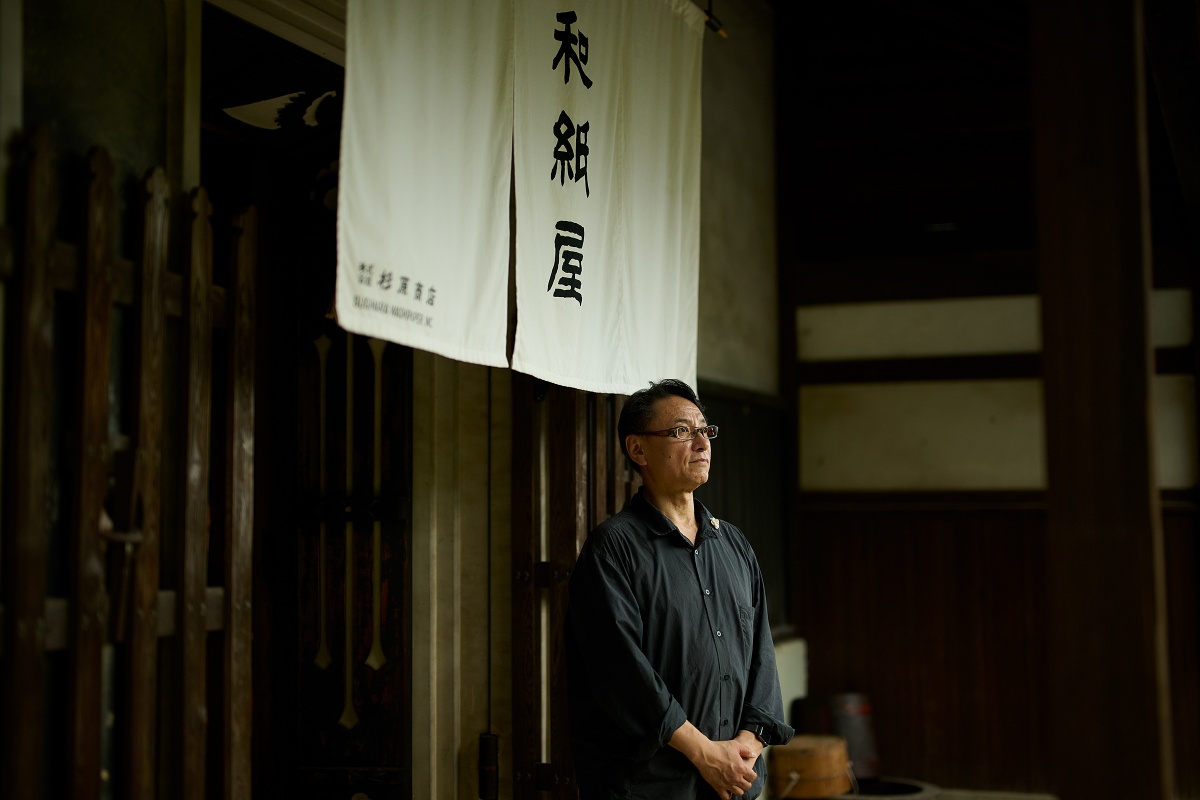
Washi sommelier Yoshinao Sugihara of the 150-year-old washi wholesaler, Sugihara Washipaper Inc.
The Goka washi village is unique in that it still has wholesalers that play the role of maintaining the demand and supply of washi. Like the Taki Seishi paper mill, Sugihara Washipaper Inc. has been around since the Meiji era, or over 150 years. The Sugihara family opened a paper store in Nihombashi, Tokyo about one century ago and provided paper for the enthronement ceremony of Emperor Taisho in 1915. For years, the two companies have shared a relationship that has helped introduce the best of Echizen washi culture, history and versatility to the rest of Japan and the world.
Yoshinao Sugihara, the tenth-generation proprietor, plays the crucial role as “washi sommelier,” and says the Goka washi village has always adapted to the times. “The village used to enjoy the patronage of the shogun,” he says. “But after the Meiji Restoration, his patronage was lost and Echizen washi had to evolve for other uses, such as fusuma door panels.”
Sugihara has a strong interest in merging architecture with Echizen’s washi, resulting in collaborations that have included work with GUERLAIN in Paris and Takashimaya in Nihombashi.
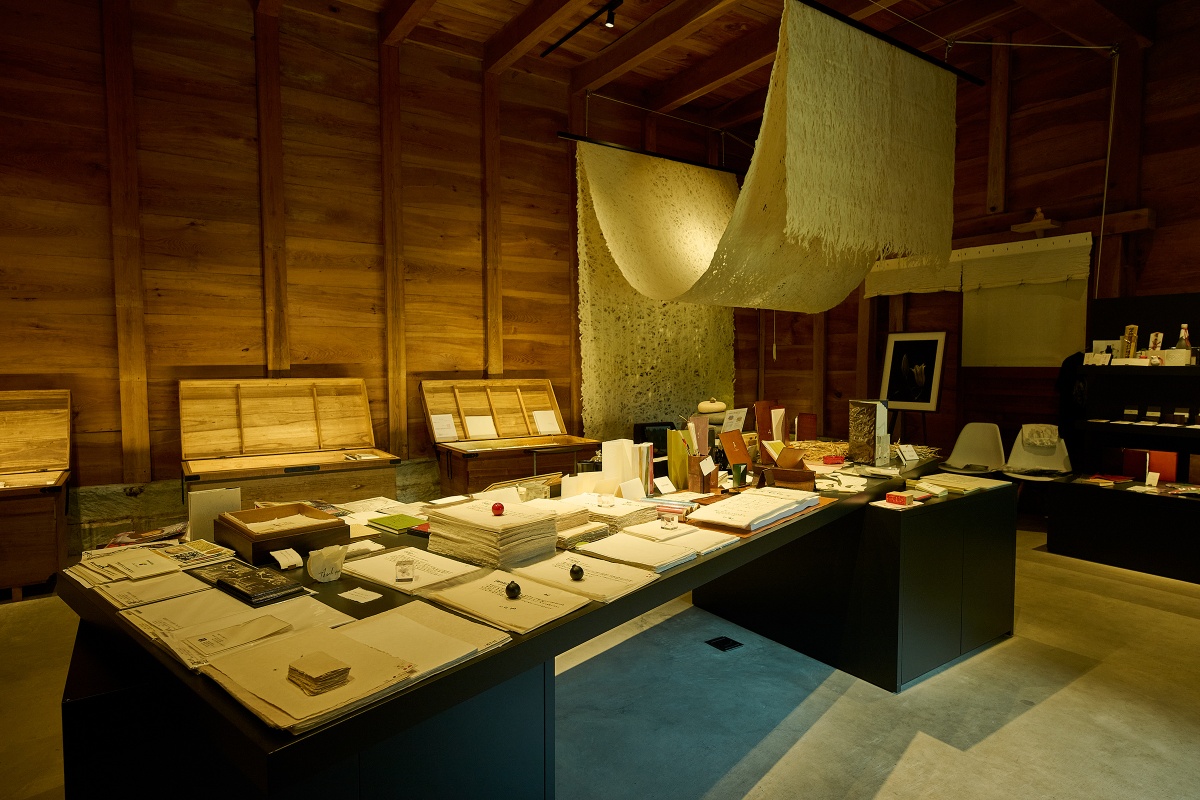
The endless possibilities of washi are on display in this stylish showroom set in a renovated washi warehouse.
Six years ago, Sugihara converted one of the centuries-old storerooms into a showroom displaying how traditional washi was used from the Heian era to modern times. The display includes invitation cards, face masks, and even papier maché decorations, such as one that gives a soft touch to a stack of zen stones.
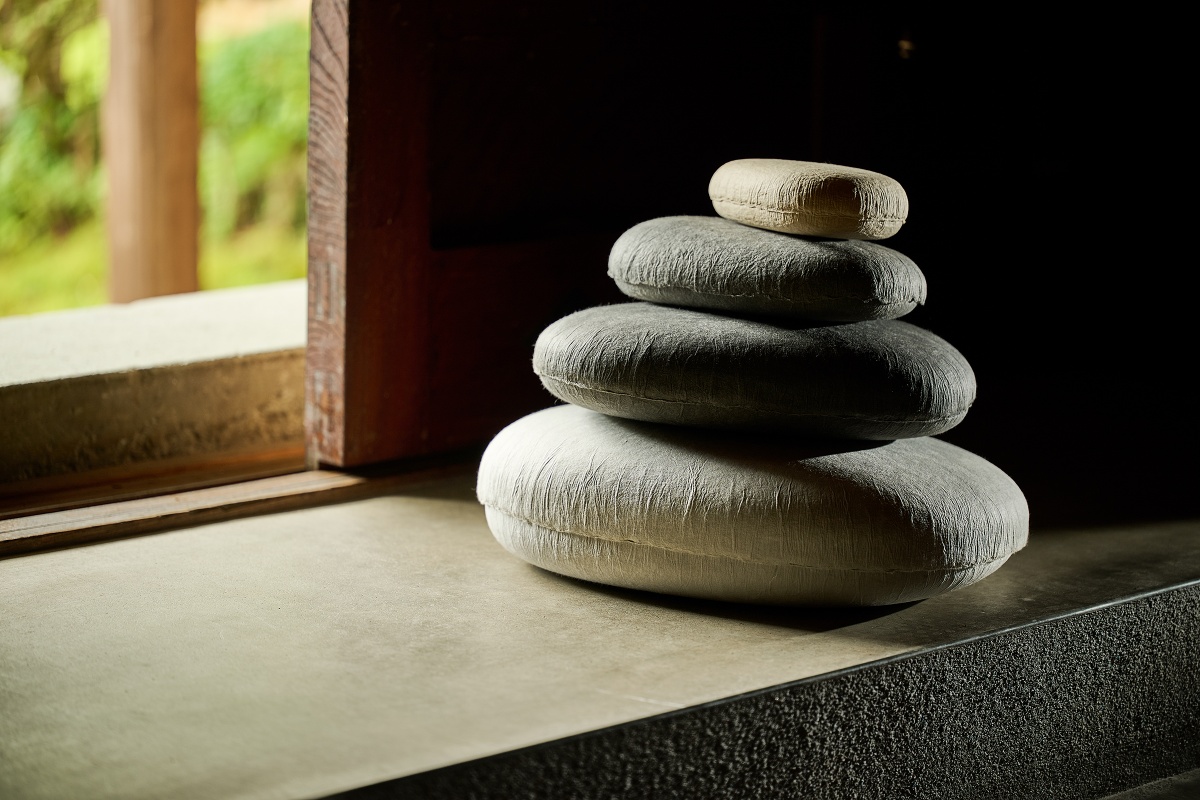
Find peace of mind with these washi zen stones, available at LUMINE Singapore’s pop-up Fukui store.
The Sugihara Washipaper estate is designated as a National Tangible Cultural Property, and one only needs to walk through the main entrance to see why. The traditional architecture, which dates from 150 years ago, and the artifacts on display speak of a proud heritage as Fukui’s leading washi village wholesaler.
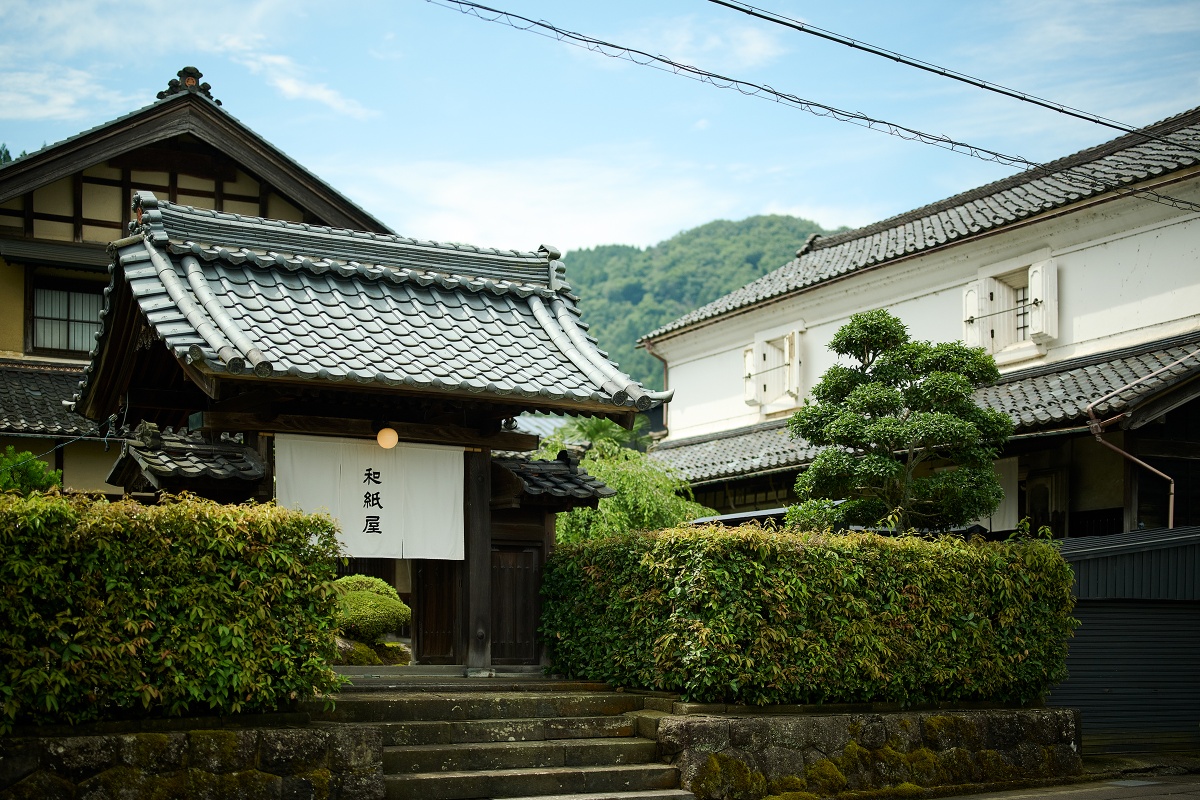
The Sugihara Washipaper Inc. estate is recognized as a National Tangible Cultural Property.
Long-lasting Echizen Lacquerware
Sabae city in Fukui prefecture is famous for Echizen shikki, or lacquerware. It is treasured for its luster and refined brilliance which is said to get more beautiful with use, and more durable with age. The urushiol (the oily mixture of organic compounds) contained in the lacquer takes a long time to harden—and requires high humidity. Fukui’s rainy weather makes it an ideal environment for lacquerware making, and helps explain its existence as the oldest and largest producer of lacquerware in Japan.
Lacquerware is traditionally used in weddings and other ceremonial events, and usually features the colors red, black and gold. There is an intricate division of labor based on familiar and regional ties in each step of the production process. The steps, from sap collection to wood-base carving, undercoating, overcoating, maki-e (decoration) and chinkin (gold inlay), are traditionally divided amongst the craftsmen.
Shitsurindo: Making everyday lacquerware
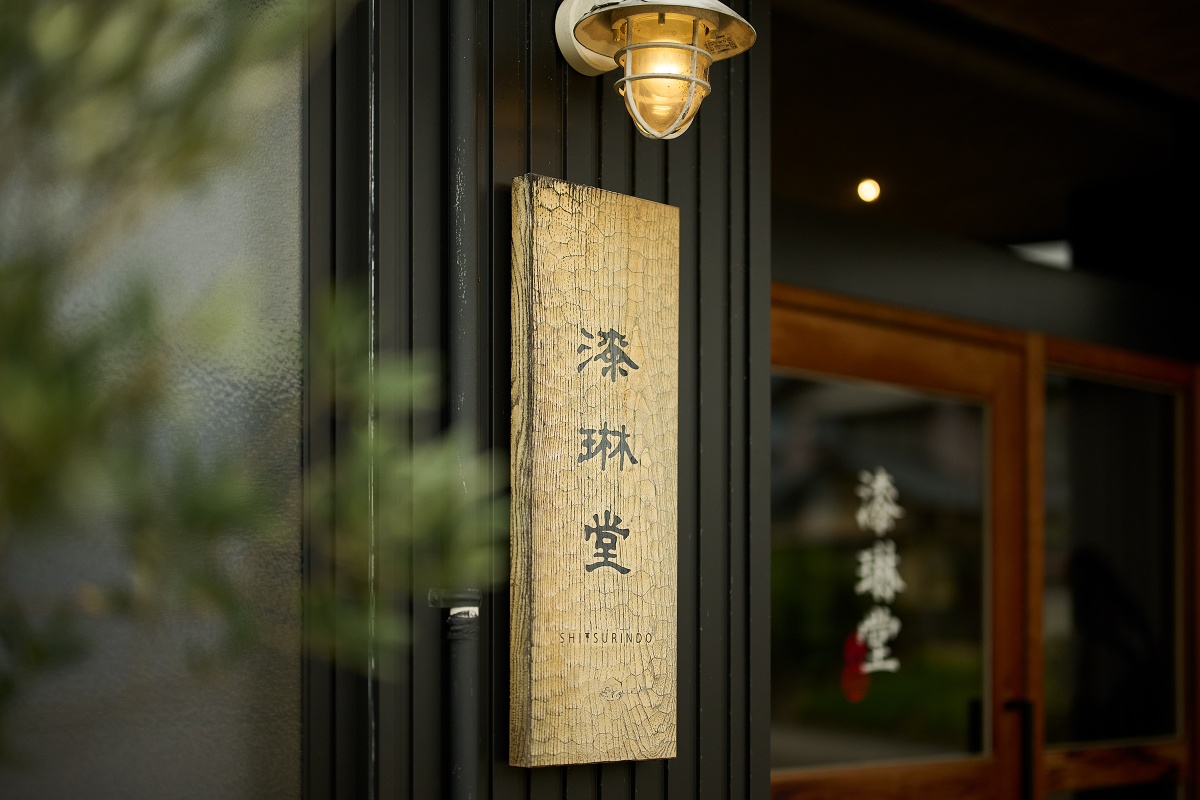
Founded in 1793, Shitsurindo is one of the pioneers of the lacquerware industry.
Since its founding in 1793, Shitsurindo has been a pioneer in the lacquer industry. It began as lacquer sap collectors, then during the Edo era was appointed high-ranking lacquer merchants. Over generations, the firm has expanded across the various steps of lacquerware making.
Toru Uchida, the eighth-generation proprietor, is the youngest traditional craftsman in the region and has been helping lacquerware evolve to fit modern-day lifestyles. In collaboration with Fukui University, Shitsurindo invented a new way of urushi making called “Echizen Kata-urushi” (hard urushi). This manufacturing process has succeeded in making lacquerware more durable and heat resistant than conventional lacquerware, and it can be washed in a dishwasher.
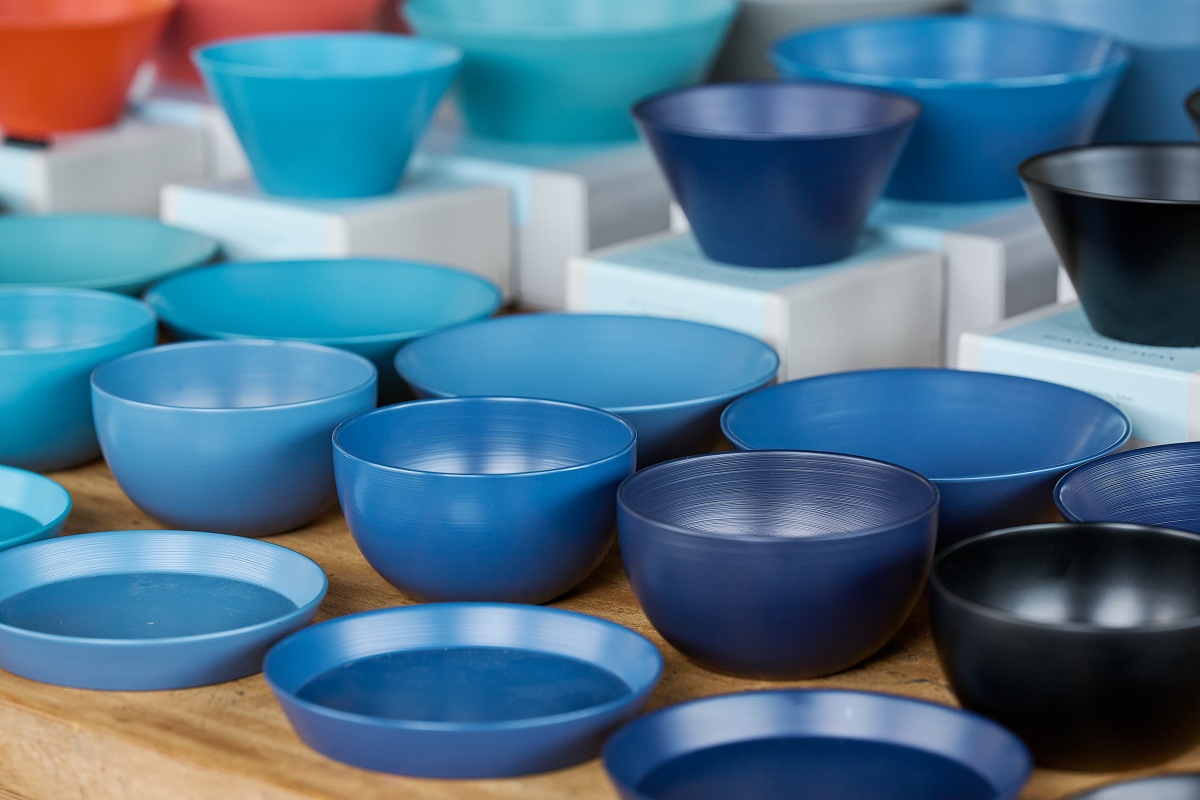
This colorful RIN & CO. series of modern lacquerware is made to fit modern lifetsyles.
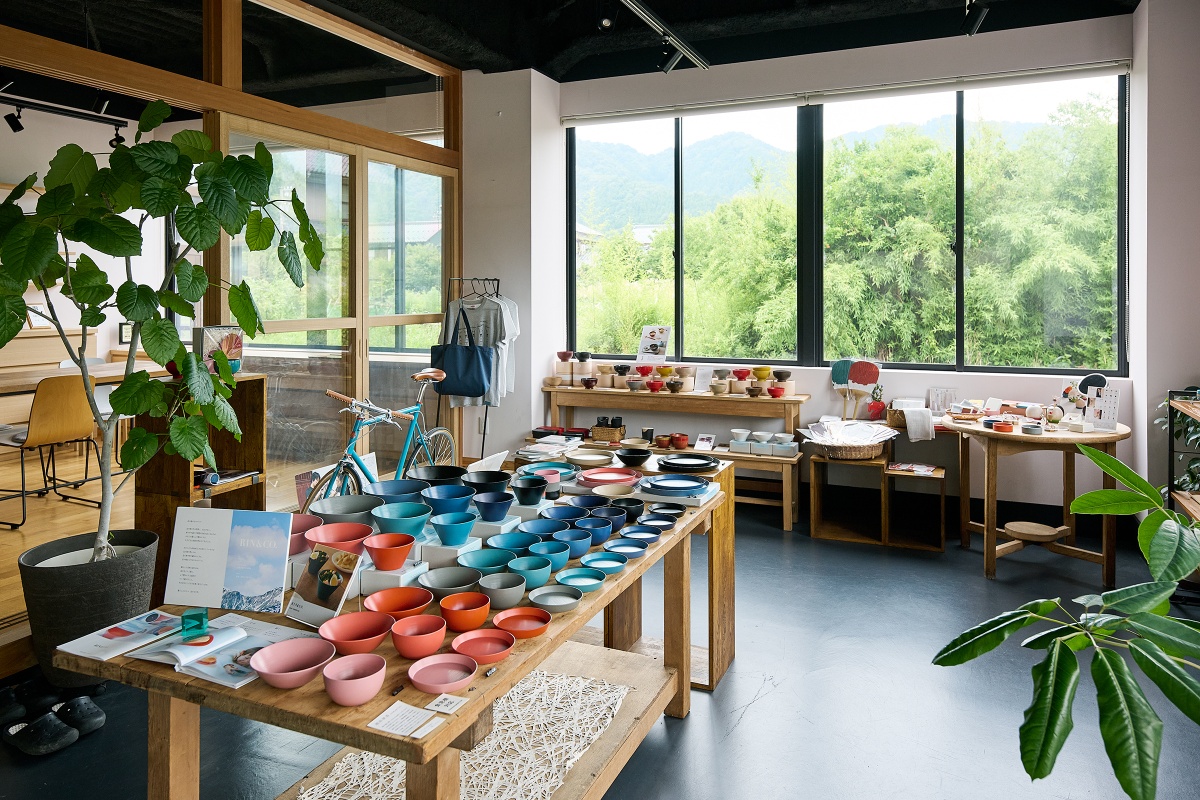
The Shitsurindo showroom in Sabae.
Uchida also came up with a new line, called RIN & CO., which combines the lasting qualities of lacquerware with a modern color scheme and design that can suit any cuisine. “Each piece is still painted by hand,” he says. “To differentiate from spray painted products, the hakeme technique (creating a design using brush strokes on the lacquer) is used as the series design.”
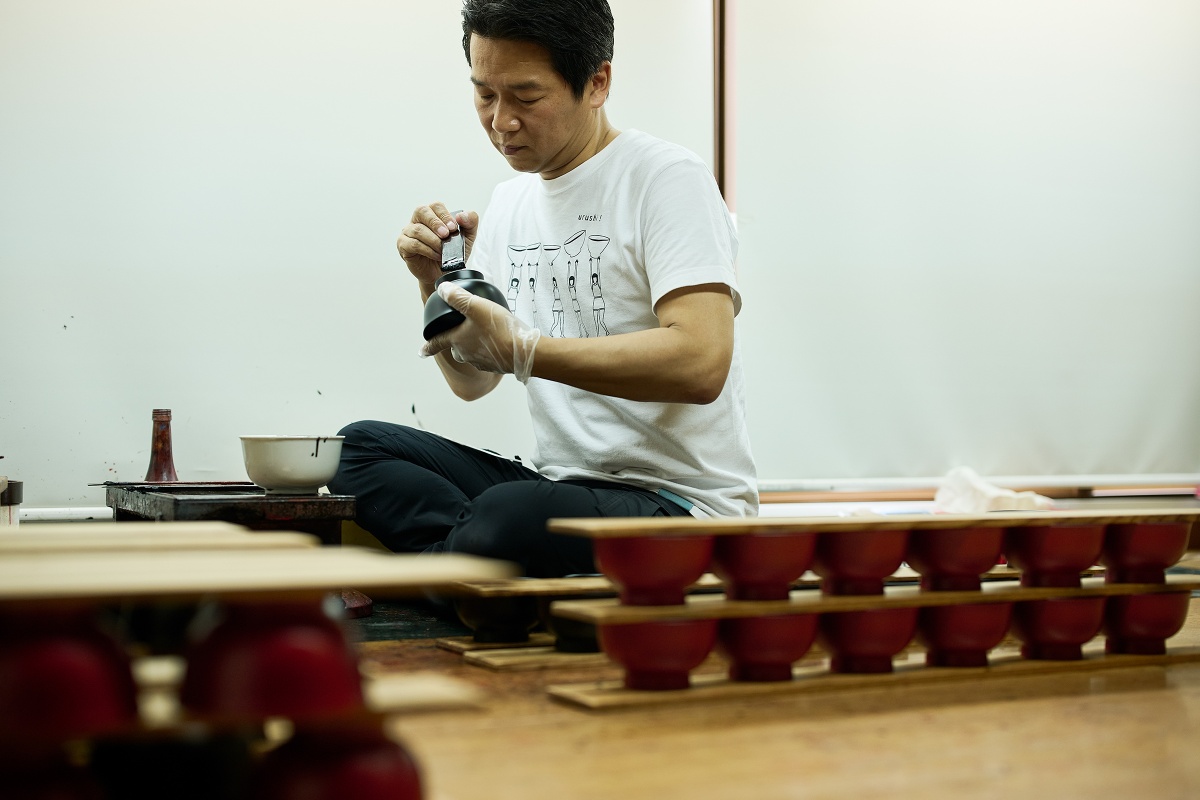
Toru Uchida of Shitsurindo is breathing new life into Echizen lacquerware.
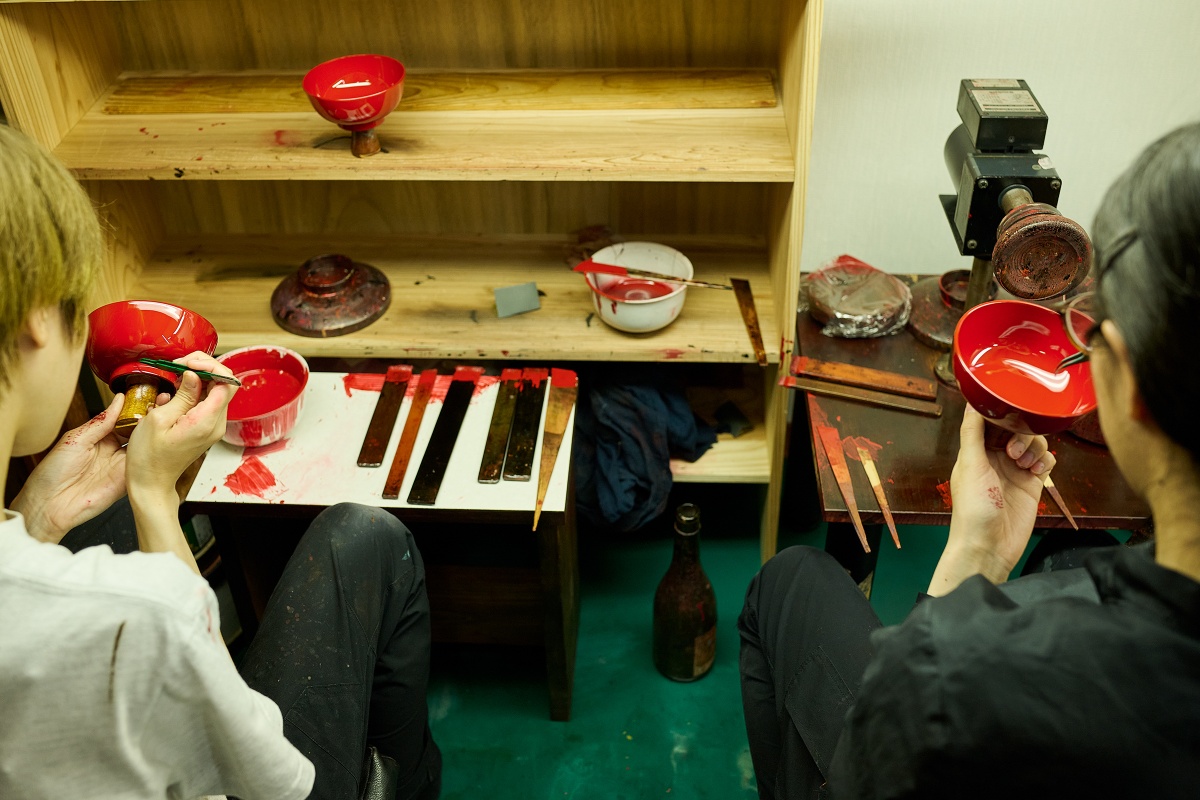
Each piece of lacquerware is painstakingly painted by hand.
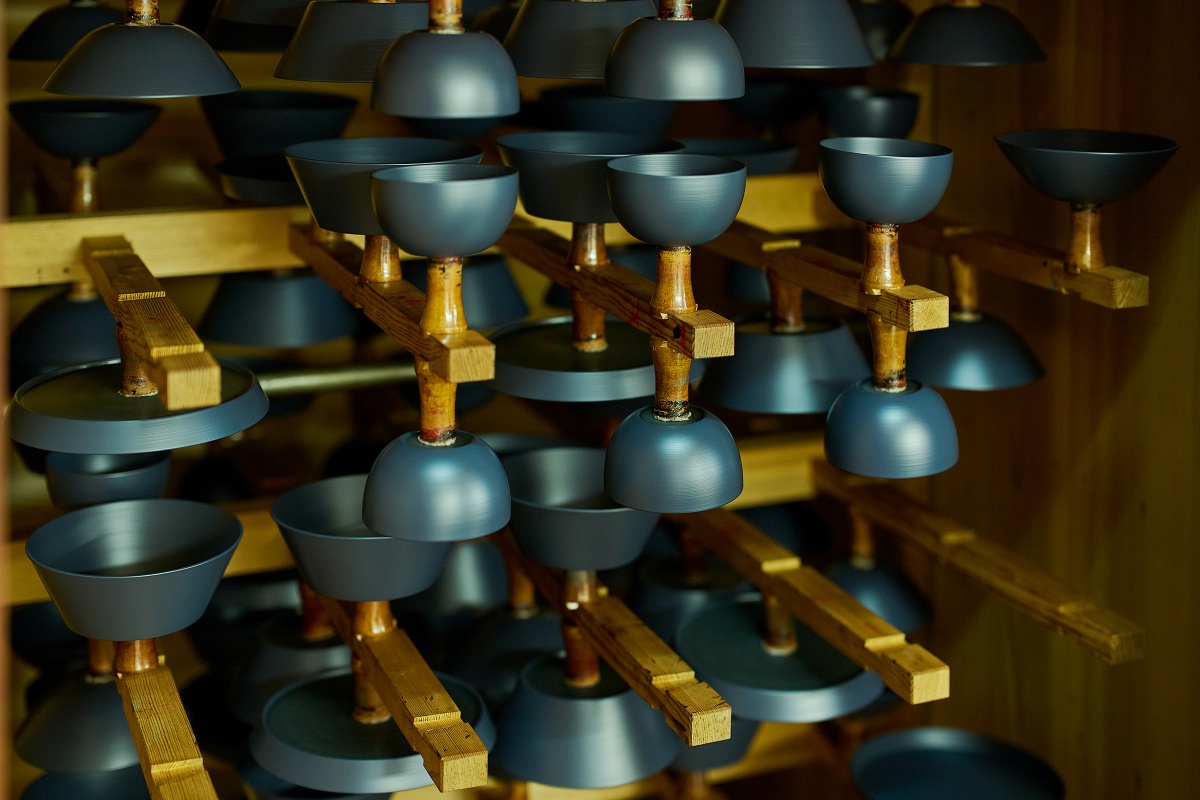
The rotary drying process is a traditional method in which the vessel is slowly rotated to dry the lacquer coating evenly.
The resulting lacquerware is so exact that it is easy to mistake it as being made by machines. One big challenge is to keep lacquerware affordable, given the painstaking production process. Uchida hopes that younger generations and overseas clientele will come to appreciate the lasting qualities and health aspects of using lacquerware through his innovations in Echizen shikki.
Taking pride in products, not artworks
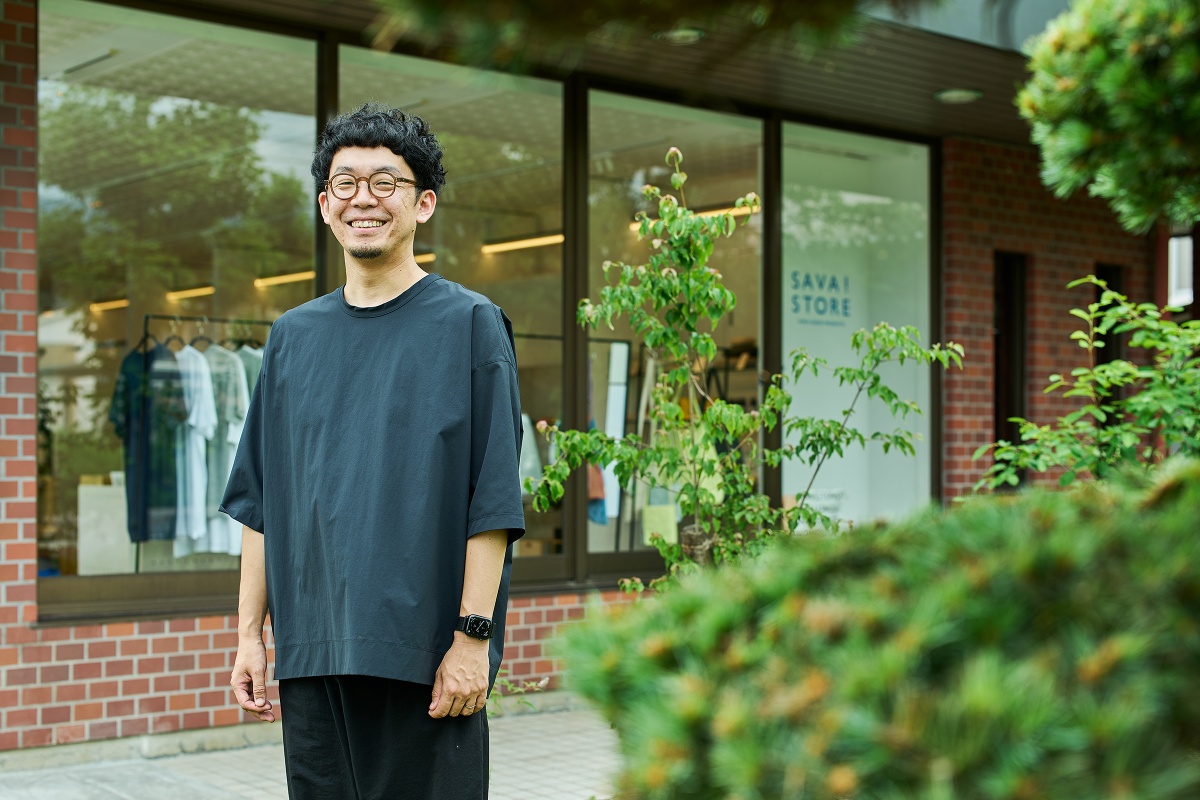
Naohiro Niiyama, who runs the Sava! Store, goes beyond product design to community design.
Naohiro Niiyama is helping bring out the hidden gems of the Tannan area—which includes Sabae and Echizen. Originally from Osaka, he relocated in 2009. Although his studies were in architecture, the unique setting of the Tannan area led him to became interested in both product and community design.
“Sabae and Echizen is a densely populated area, with local cottage industries such as lacquerware, eyewear, washi and knives within a 10-km radius,” he says. “This is a feature unique to the area.”
Niiyama set up the creative design firm TSUGI (which means “to connect”) in 2013, with the intention of helping local cottage industries package and present products. TSUGI also create websites for them in order to enhance their appeal to a wider market. “The craftsmen in Echizen take pride in making practical products, and don’t view themselves as artisans or their work as artwork,” he says. “In fact, they get annoyed if you call their products ‘art.’”
The firm also runs two Sava!Store outlets, one at TSUGI headquarters and one near Fukui station, that sell the latest Fukui crafts, both functional and fashionable. Over the past decade, Niiyama has expanded his field to include craft and experience tours so that visitors can get a hands-on feel of the area’s rich craftsmen culture.
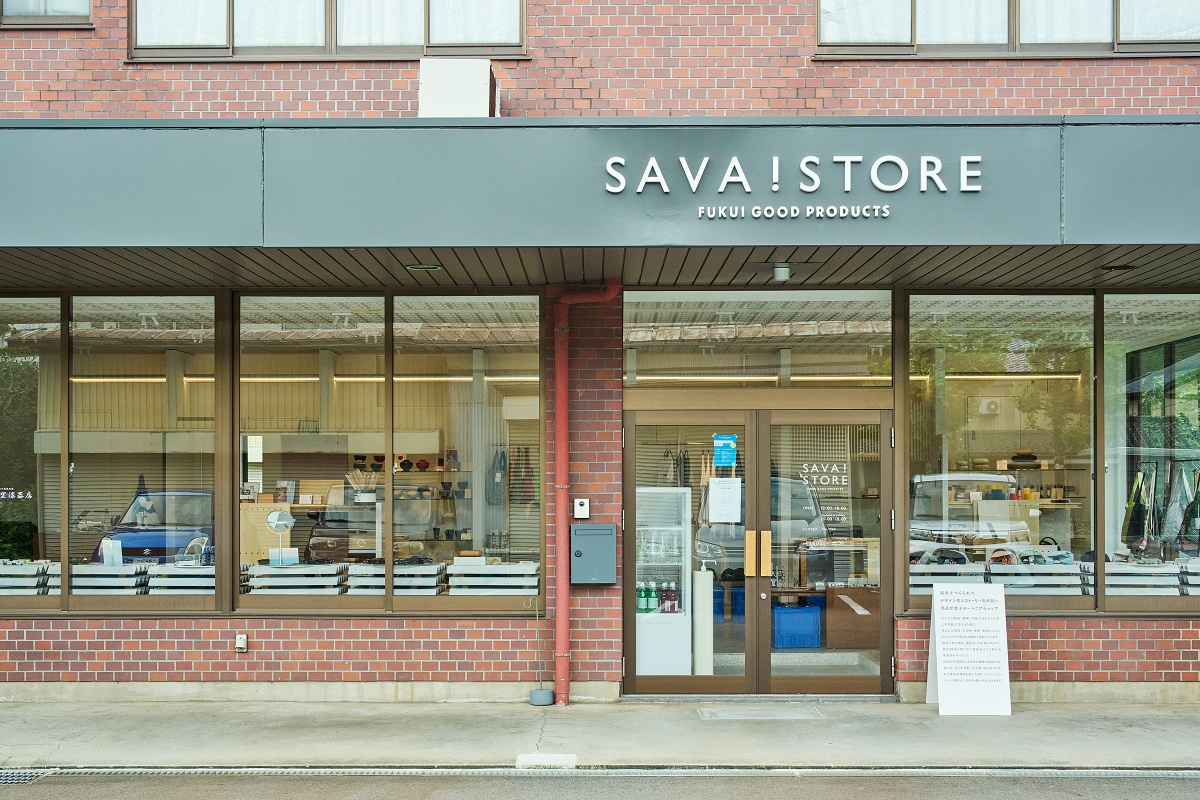
The finest of Fukui craft and goods can be found at the Sava!Store.
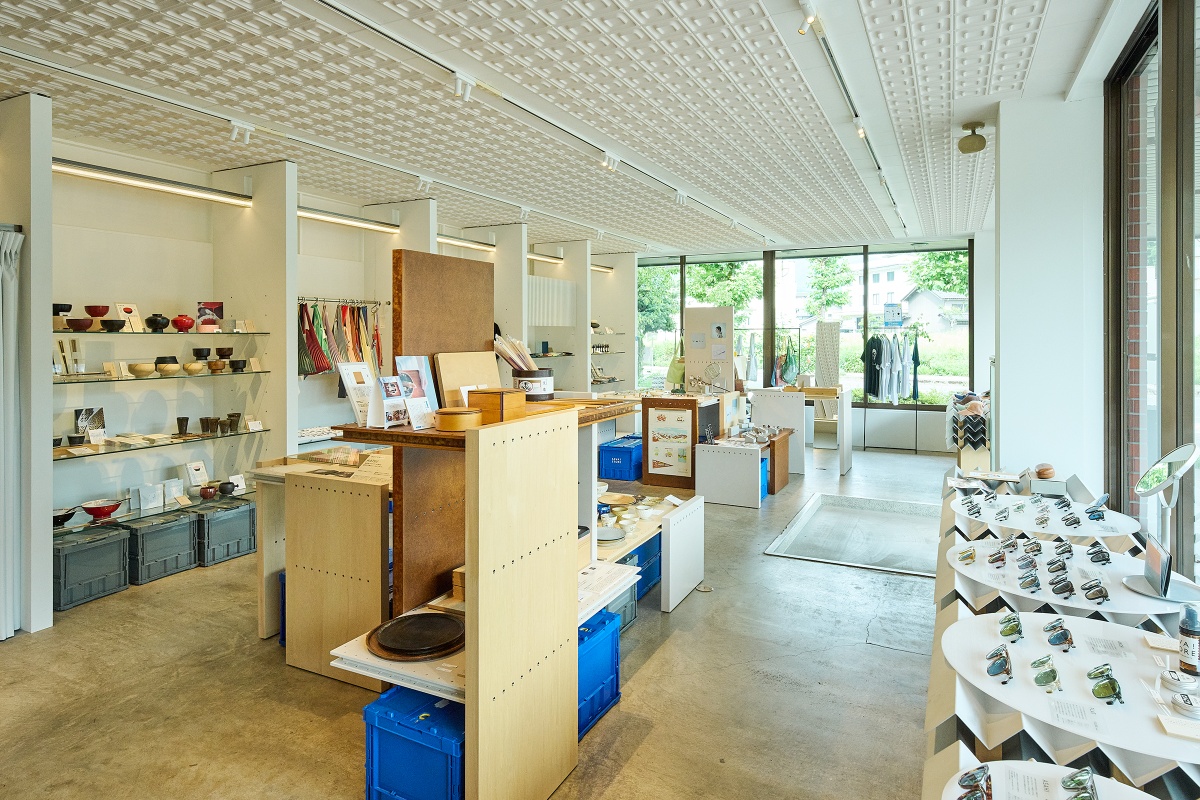
All the products at Sava!Store are examples of traditional craftsmanship.
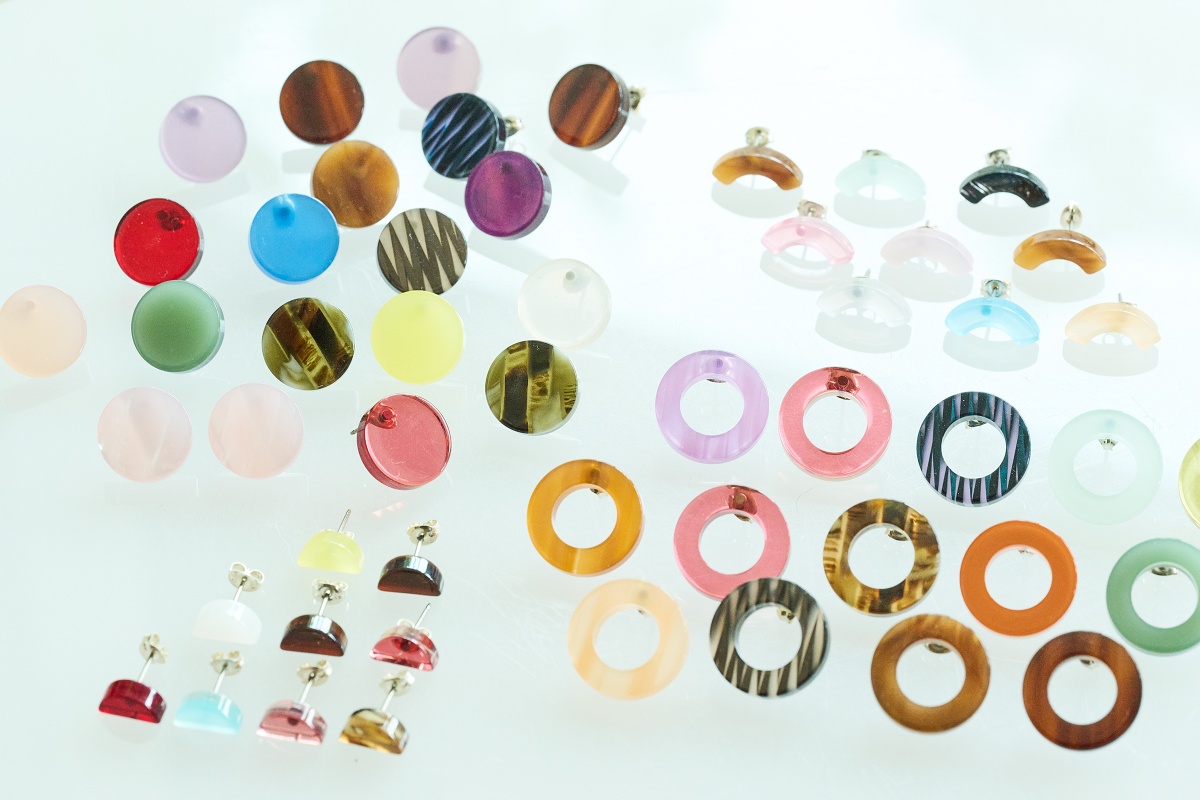
Eco-friendly and fashionable, these accessories are made from the same material used to make Sabae hand-crafted spectacles.
DISCOVER YOUR HIDDEN GEM
This August, LUMINE opens its new flagship store at Raffles City Shopping Centre, in the heart of Singapore’s civic district. From here, the store will serve as the center of LUMINE's global strategy of transmitting the splendor of Japanese culture and craftsmanship and the joy of fashion. To commemorate this LUMINE Singapore milestone, the location will feature a pop-up store shoppers will discover a selection of fine Fukui crafts and products, from washi, lacquerware, and accessories spun-off from Sabae eyewear. Don’t miss this chance to discover the many hidden gems from Fukui Prefecture!
LUMINE SINGAPORE

In August 2024, LUMINE SINGAPORE will open its global flagship store at the Raffles City Shopping Centre, Singapore.
Profile
Ching-Li Tor
Ching-Li is a Singaporean journalist based in Tokyo. She is a keen practitioner of kendo and reports on current affairs, human interest stories and cultural topics in Japan.
Photos by Kitchen Minoru


